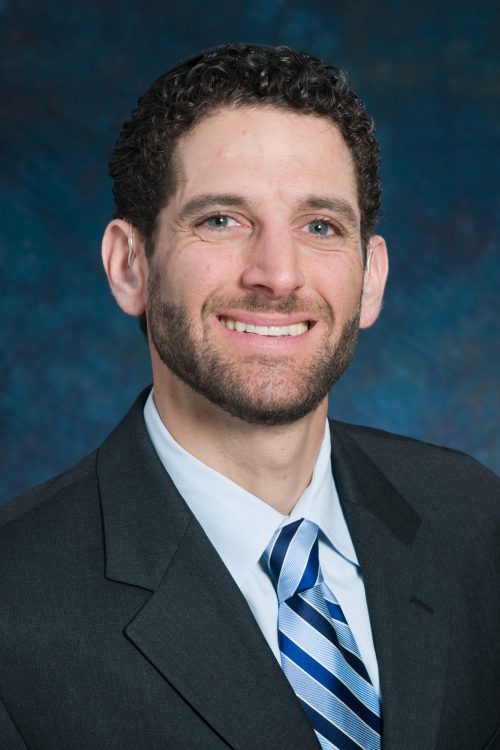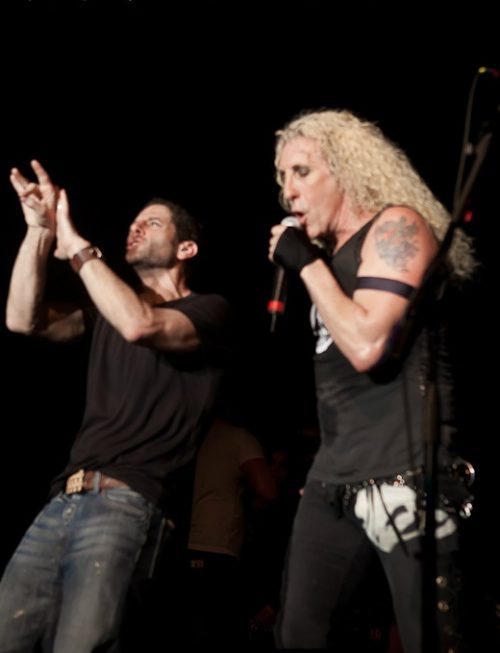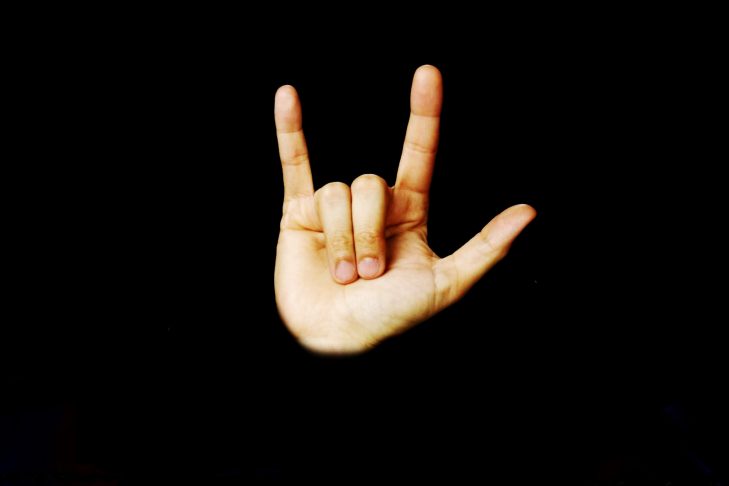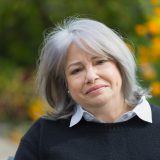When you meet Darby Leigh, rabbi of Kerem Shalom in Concord, it’s obvious why he’s included in the Forward’s 2016 list of “America’s Most Inspiring Rabbis.” Rabbi Leigh is brimming with enthusiasm about prayer and Torah. He is also distinctive among his 32 peers on the list. Rabbi Leigh, 43, was born profoundly deaf and is one of two deaf pulpit rabbis working in the United States. He was ordained in 2008 by the Reconstructionist Rabbinical College (RRC) in Philadelphia and came to Kerem Shalom in 2013.
In a wide-ranging conversation in his office, Rabbi Darby, as congregants call him, mused about his convoluted path to the rabbinate and how his deafness has made him empathetic. Leigh was born and raised on Manhattan’s Upper East Side in the late 1980s. He grew up in a Reform family and attended the prestigious Dalton School. He was the only deaf student at Dalton at the time, which made him both an anomaly and an outsider. He recalled, “The deafness piece of my identity gave me a very clear sense of being different, of not quite fitting in.”

His outsider status was affirmed early on when his family briefly attended a congregation for the deaf. Although Leigh was very young, he remembers that he and the other members were relegated to the basement of a large synagogue. “I remember walking past the main sanctuary with red velvet cushions on the pews on my way to the basement,” he said. “I wondered why we didn’t go in that room. Instead we were in a room with horrible fluorescent lighting, plastic chairs and a small ark.”
When it came time for him and his older sister to attend Hebrew school, Leigh and his family joined Central Synagogue in midtown Manhattan. Although he was close with his rabbi, who later became a mentor, he never felt a sense of religious engagement in Hebrew school. He dropped out midway through high school to pursue athletics and theater. “After high school I didn’t set foot in a synagogue for 10 years, but I never lost the piece about Judaism and the way it was meaningful to me,” he said. “But synagogue is not where I found that. Some of it may have had to do with my deafness.”
In high school he became involved in New York City’s heavy metal and punk scene, wearing a leather jacket with spikes and chains, as well as a pin of the American and Israeli flags. “That’s another part of my story—my interest in music,” he said. Over the years Leigh earned the moniker “The Heavy Metal Rabbi” for touring with Jane’s Addiction and Twisted Sister to sign the lyrics to their songs.

At the University of Rochester, Leigh said he became a seeker. He majored in comparative religions and explored Asian religions, as well as Islam and African tribal religions. Judaism was not on his agenda. “I felt like every religion I studied, I found something that resonated with me,” he said. “Every religion I studied I found there was love.”
During his junior year, Leigh took a sabbatical at Gaulladet University in Washington, D.C., the premier institution of higher learning for the deaf. “Gaulladet was a profound, life-changing experience,” he said. “For the first time in my life my deafness was erased. It clicked for me that everyone here is deaf and they don’t care that I am. They were in a majority culture. I have a great deal of empathy for communities who have similar experiences.”
After college, Leigh was a touring actor with the National Theatre of the Deaf (NTD). He traveled with the acting company for almost four years and said, “My journey back to Judaism began on the NTD tour bus.” At the time, Leigh sported dreadlocks and fielded questions about his seeming connection to Rastafarianism. Although culturally and adamantly Jewish, Leigh felt he needed to understand what his dreadlocks were communicating to others, so he studied Rastafarian beliefs on his own. “I learned that Rastafarians grew dreads in emulation of a commandment in the Book of Numbers,” he said. It turns out that the Rastafarian tradition had to do with the biblical Nazarites. The idea that there was a solitary spiritual path in Judaism without a rabbi or a synagogue intrigued Leigh. “I took a vow not to cut my hair until I got an internal message that it was time to cut it,” he said.
That message came a decade later in 2000, when Leigh was a staff member for the International March of the Living. On the march from Auschwitz to Birkenau, he said he heard a strong, clear inner voice that it was time to return to Judaism.
After earning a master’s degree in religion from Columbia University, he applied to rabbinical school. “When I met with a Reconstructionist rabbi, I knew I was home,” he said. “The RRC was the place where I wanted to dedicate the next chunk of my spiritual journey. It was very important to me to apply to rabbinical school with dreadlocks that were now down to my knees. After I got in, I cut them off the week we read Parshat Naso, the Torah portion dedicated to the Nazarite.”
In 2011, Leigh created a series of videos in which he signs Hebrew prayers in American Sign Language. His translation of the Shema—Judaism’s foundational prayer—is notable for the way he interprets the word shema, which literally means “to hear,” as “pay attention.” “If you tell me that the Shema, the most fundamental prayer in Judaism, is about auditory perception, then you have excluded me from the tradition,” he said. Leigh, however, goes on to observe that, “the vast majority of my career has been spent listening. My ears may be broken, but I’m a good listener.”
Learn more about Leigh’s rabbinic journey:
Watch Leigh describe how he translates the Shema for ASL speakers:
This post has been contributed by a third party. The opinions, facts and any media content are presented solely by the author, and JewishBoston assumes no responsibility for them. Want to add your voice to the conversation? Publish your own post here. MORE



